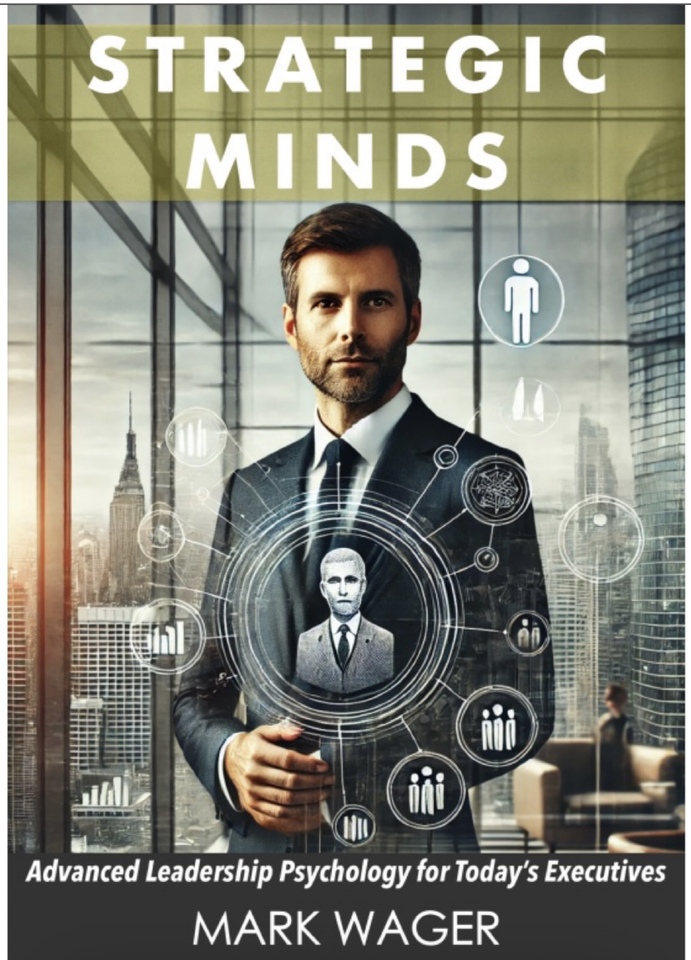The Culture Blueprint: How Executives Shape the Heart of Their Organisation
The Culture Blueprint: How Executives Shape the Heart of Their Organisation
By Mark Wager
Organisational culture isn’t something that lives in the HR manual or gets announced during orientation. It’s the invisible force that governs how people behave, communicate, and make decisions day in and day out. As an executive, whether you realise it or not, you’re not just part of the culture—you’re its architect. And this chapter, adapted from my latest book Strategic Minds, is a reminder of just how powerful your role in shaping that culture can be.
When someone joins your team—whether they walk through the office doors or log into a Zoom call—they immediately absorb the cultural cues: How do people speak to each other? Are new ideas welcomed or met with silence? Is there laughter or tension? These signals shape not only how employees feel, but also how they perform. And the root of it all starts at the top.
Recognising the Hidden Signals
The most effective executives are those who understand the subtle signals their culture is sending. It begins by paying attention to the everyday interactions that often go unnoticed—how meetings are run, how feedback is given, and even how mistakes are handled. These patterns reveal whether your culture fosters trust or fear, collaboration or competition, innovation or stagnation.
It’s not uncommon for organisations to proudly declare their values—agility, creativity, respect—but what’s stated and what’s practised can be two very different things. If you say innovation matters but penalise risk-taking, people will quickly learn the real rules of the game. Cultural misalignment like this undermines trust and breeds disengagement.
The Executive’s Influence
Your title may grant you authority, but it’s your behaviour that shapes culture. When you show up to meetings curious rather than commanding, when you handle conflict with empathy rather than ego, and when you value effort as much as outcomes—you’re setting the tone for everyone else.
And this influence isn’t limited to grand gestures. The casual check-in, the nod of encouragement, the public recognition of someone who took a thoughtful risk—these micro-moments matter. They tell people what’s really valued and what kind of behaviour gets rewarded.
Large organisations often contain subcultures—marketing might feel like a creative studio, while finance operates with precision and discipline. Rather than trying to standardise culture, your job is to unify these teams through shared values while respecting their uniqueness. A strong culture doesn’t mean everyone’s the same—it means everyone’s aligned.
Trust: The Bedrock of Culture
If there’s one non-negotiable in building a healthy culture, it’s trust. Without it, innovation stalls, collaboration breaks down, and performance suffers. But trust isn’t built through policies—it’s built through consistency, transparency, and respect.
As a leader, do what you say you’ll do. Be honest about the challenges the organisation is facing. Share not just the wins, but the stumbles along the way. When people see their leaders being real, they feel safe enough to do the same.
Empowerment is another key component. When people are trusted to make decisions within their roles, they develop a stronger sense of ownership. But empowerment without accountability can lead to chaos. The sweet spot is when people are trusted to act and held accountable for outcomes—an environment where high standards and high support go hand in hand.
Embedding a Growth Mindset
A high-performing culture isn’t one that avoids failure—it’s one that learns from it. That’s where a growth mindset comes in. When people believe that skills can be developed through effort and learning, they become more resilient, open to feedback, and willing to push boundaries.
Executives who embrace this mindset celebrate progress, not just perfection. They reward curiosity, persistence, and innovation—even when the results fall short. They understand that failure, when handled well, is a powerful teacher.
You can embed this mindset by investing in your people’s development. Encourage learning through training, mentorship, or peer coaching. When employees feel the organisation is committed to their growth, they’re more engaged, creative, and loyal.
Sustaining Culture Over Time
Cultural change doesn’t happen with a memo. It’s not a campaign; it’s a commitment. Sustaining cultural change requires consistent reinforcement through behaviours, systems, and—perhaps most importantly—storytelling.
Every organisation has a story. Remind your people of the journey—how far you’ve come, what you’ve overcome, and the values that got you there. Stories build connection and reinforce identity. They help people understand not just what they’re doing, but why it matters.
And as the world changes, so too will your culture. New technologies, generational shifts, economic shifts—they’ll all shape how people work and what they expect. The key is to stay adaptable while remaining anchored in your core values. Flexibility doesn’t mean compromising on what matters; it means knowing when to evolve and when to stand firm.
Final Thoughts
Culture is more than a vibe—it’s your competitive advantage. It determines whether people stay or leave, whether ideas flourish or wither, whether performance excels or stagnates. As an executive, your ability to understand and shape that culture may be the most important skill you possess.
You don’t need to have all the answers. But you do need to be intentional. Lead with clarity. Show up consistently. Create safety, champion growth, and tell the story that reminds people why they chose to be part of this journey in the first place.
This article was adapted from Chapter 2 of my new book, “Strategic Minds: Advanced Leadership Psychology for Today’s Executives.” If you’re interested in diving deeper into how top leaders influence culture and performance, reach out to me directly—I’d love to send you a free copy.
Posted: Monday 16 June 2025

